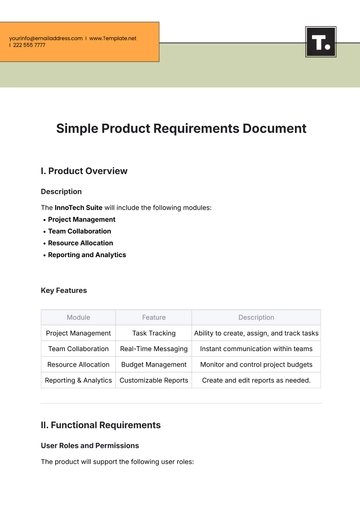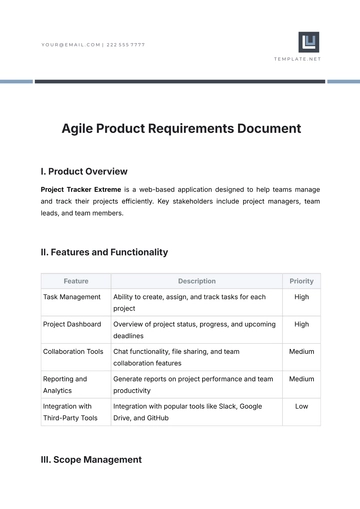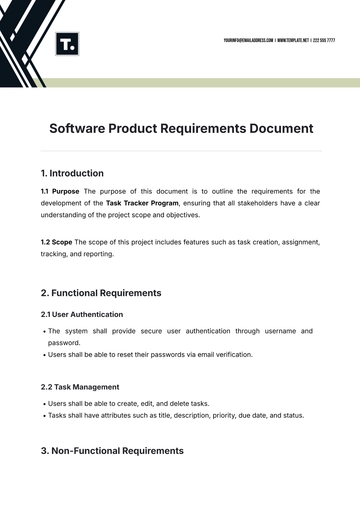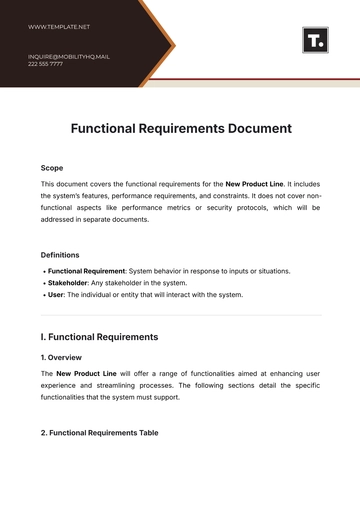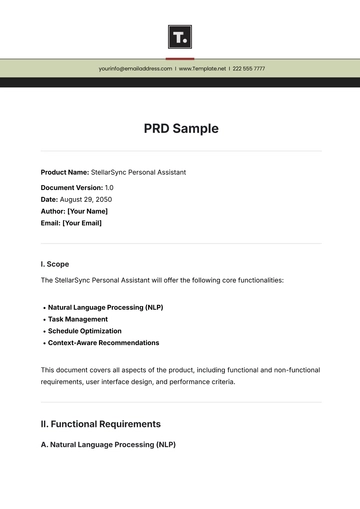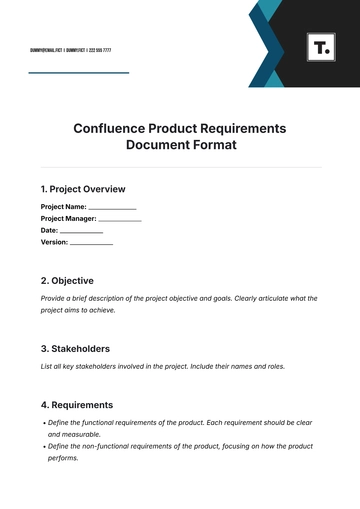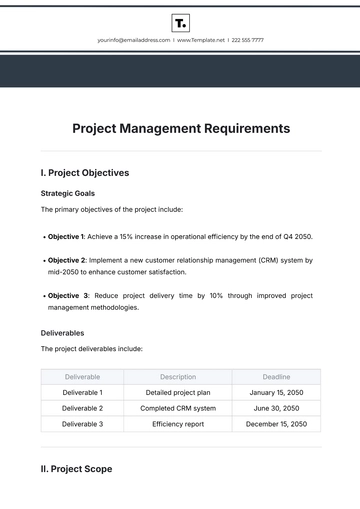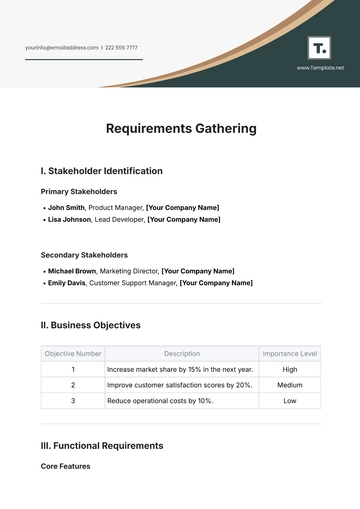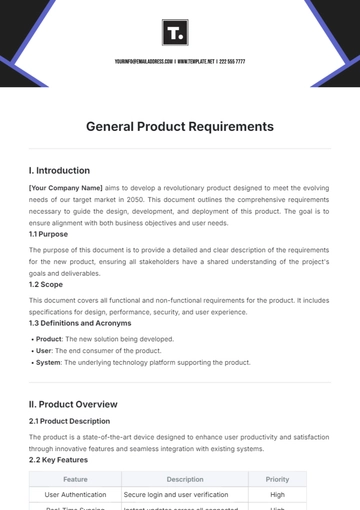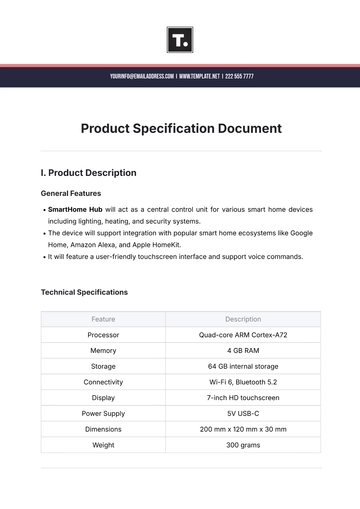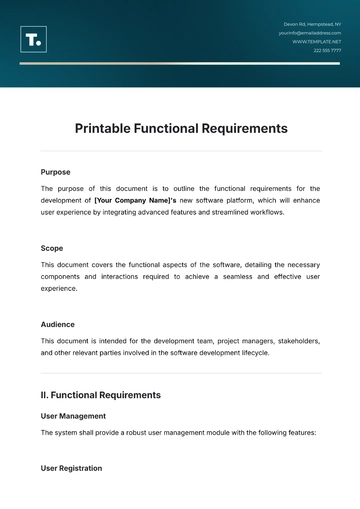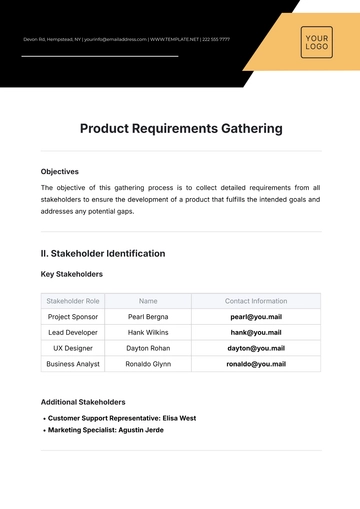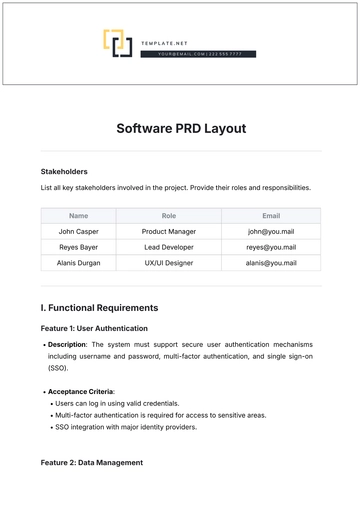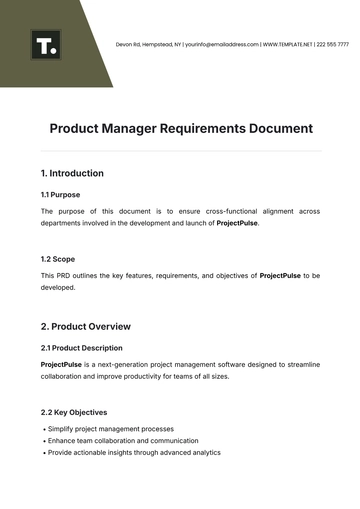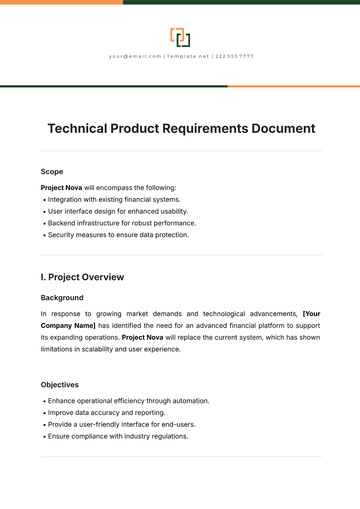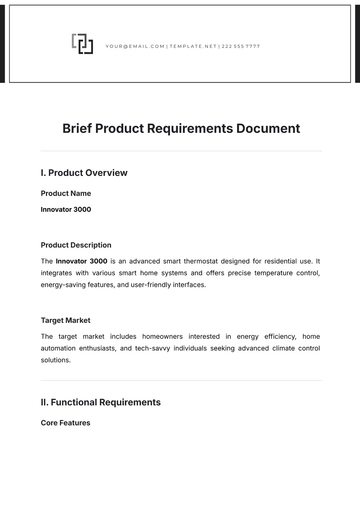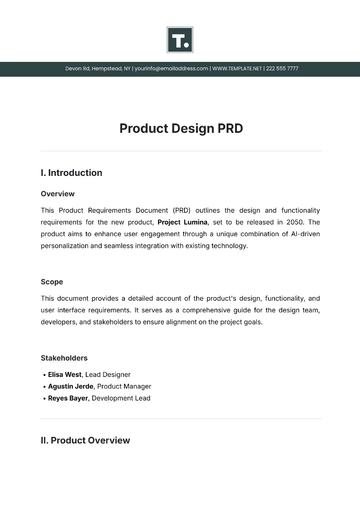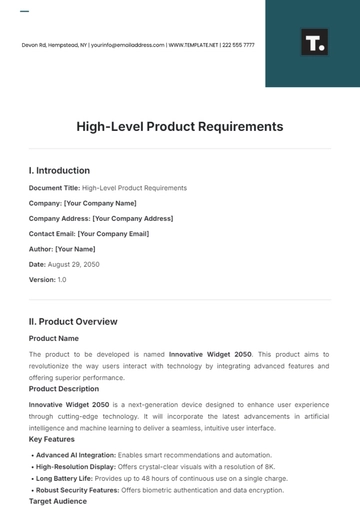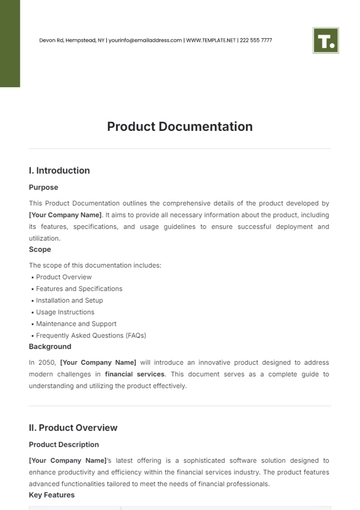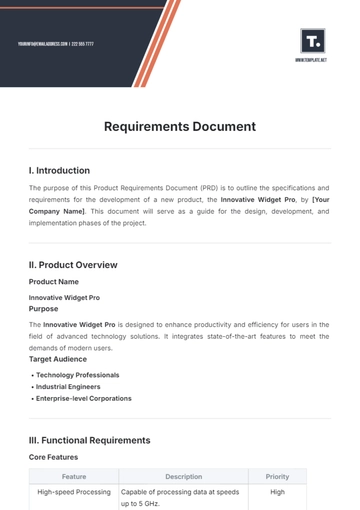Hardware Product Requirements Document
Company: [YOUR COMPANY NAME]
Prepared by: [YOUR NAME]
Department: [YOUR DEPARTMENT]
Date: [DATE]
I. Introduction
[YOUR COMPANY NAME]is thrilled to introduce a groundbreaking hardware product aimed at revolutionizing the healthcare industry. This Hardware Product Requirements Document serves as a comprehensive guide for the development team, ensuring alignment and providing a reference point throughout the product development lifecycle.
II. Product Overview
The [PRODUCT NAME] is a portable medical imaging device designed to streamline diagnostic processes in hospitals and clinics, catering to the needs of healthcare professionals. It aims to address the increasing demand for efficient and accurate medical imaging solutions, delivering improved patient care and diagnosis.
III. User Requirements
User Personas
Physician: Dr. Emily Smith, a busy radiologist who requires quick access to high-quality medical images.
Nurse: Sarah Johnson, a nurse practitioner who needs a user-friendly device for bedside imaging.
Use Cases
IV. Functional Requirements
Core Features
High-resolution Imaging: The device must provide clear and detailed medical images suitable for diagnosis.
Intuitive User Interface: The interface should be easy to navigate, allowing healthcare professionals to operate the device efficiently.
Additional Features
Wireless Connectivity: The device should support wireless transfer of images to hospital networks.
Image Annotation: Users should be able to annotate images with notes and markers for better communication.
V. Non-functional Requirements
Performance
The device must be capable of performing scans with minimal latency, ensuring timely diagnosis.
Reliability
The device should have a high level of reliability, with minimal downtime and consistent performance.
Security
Patient data transmitted by the device must be encrypted to ensure confidentiality and compliance with HIPAA regulations.
VI. Technical Requirements
Hardware Specifications
Software Requirements
VII. User Interface / User Experience Design
Wireframes
UI/UX Guidelines
VIII. Dependencies
External Dependencies
Internal Dependencies
IX. Assumptions and Constraints
Assumptions
Constraints
X. Risks and Mitigation Strategies
Identified Risks
Mitigation Strategies
Strategy 1: Establish backup suppliers for critical components to mitigate procurement delays.
Strategy 2: Conduct thorough testing at each development stage to identify and address technical issues early.
XI. Glossary
Terms
DICOM: Digital Imaging and Communications in Medicine, a standard for transmitting, storing, and sharing medical images.
HIPAA: Health Insurance Portability and Accountability Act, a US law that protects patients' medical information.
Product Requirements Document Templates @ Template.net


